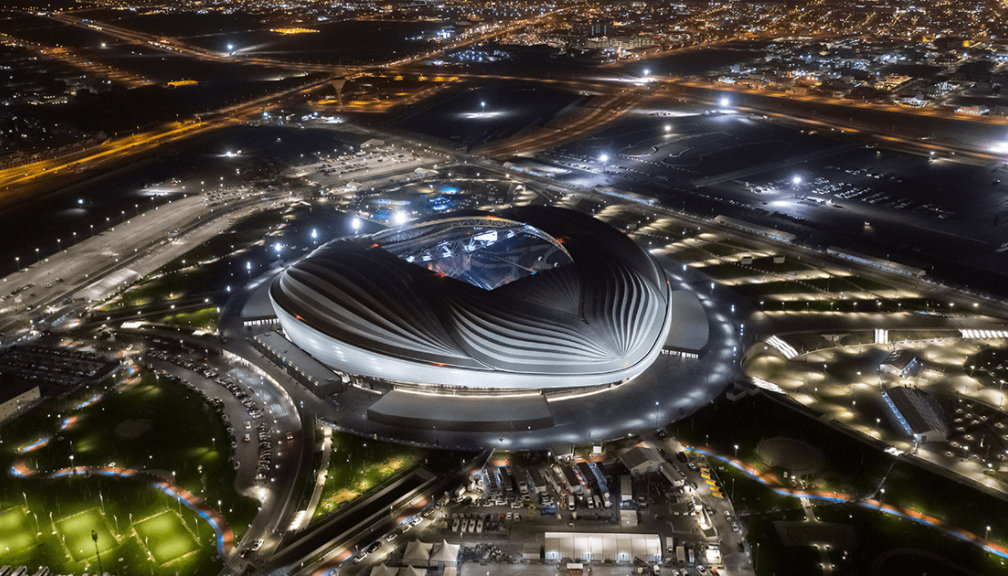
Al Janoub Stadium | FIFA World Cup 2022 in Qatar
Al Janoub Stadium, is a flexible roof football stadium in Al Janoub, Qatar, that initially opened on May 16, 2019. It will be the second of eight locations in Qatar that will host the FIFA World Cup in 2022. The International Stadium of Khalifa is undergoing renovations. It was designed by Iraqi architect Zaha Hadid in collaboration with AECOM. If you are interested in sports then Surprise Sports has everything about the World Cup Football.
Features of Al Janoub Stadium
The roof is modeled on the historic dhows used by pearl divers to traverse the Persian Gulf currents. It is home to the Al-Wakra SC Football Club, which competes in the Qatar Stars League. After the World Cup, the stadium’s capacity will be decreased to 20,000 spectators.
The history of the Al Janoub Stadium is extensive and prestigious
This will be the first time the event is held in a Muslim-majority country in the Middle East. Because Qatar previously lacked sporting facilities for the Cup, it is projected that eight new stadiums would be erected in the run-up to the event.
The Amir Cup final between Al Saad SC and Al Duhail SC had a crowd of 38,678 people. people on 16 May 2019, making it the second stadium to be built after Al Khalifa International Stadium. During the event, Qatar’s Emir, Sheikh Tamim bin Hamad Al Thani, was present. The 2020 AFC Champions League Final will be held at Al Janoub Stadium in December 2020. Six FIFA Arab Cup matches were held in the stadium in 2021.
Design of the Al Janoub Stadium
“The stadium is planned to connect with the new surroundings so that it sits at the center of an urban expansion of the city. It was inspired by the traditional dhows that local pearl divers used to navigate the Persian Gulf currents, according to the designers.
The undulating roof and façade depict Al Waqra’s trip and provide the impression of being on a ship to the viewer. The building is designed like an inverted ship, with dowels piled high to provide shade and shelter. The retractable roof of the stadium is built of plywood fluoroplastic fabric and cables, with 230-meter-long roof arches.
The cooling system prevents the stadium’s inhabitants from overheating due to Qatar’s hot and dry climate. “Detailed micro-climate study coupled with aerodynamics and appropriate roof shading exposes the design of the area, which has a little quantity of glass, which adds considerably to temperature regulation,” according to the Qatar Supreme Committee for Delivery and Heritage.
Al Janoub Stadium’s nearby facilities
A tree-lined area will serve as the stadium’s entrance. Near the Al Janoub Stadium, there are plans to construct a school, a wedding venue, cycling, and horseback riding routes, jogging trails, cafés, markets, and sports arenas are all available. If you can’t go visit the stadium, you can Watch World Cup Live on Fox Sports.
Conclusion
Al Janub Stadium will be home to Al Waqarah Sports Club after the 2022 FIFA World Cup, replacing the present 40,000-seat Saud bin Abdul Rahman Stadium, which is utilized for Qatar Stars League matches. The remaining half of the stadium’s seats will be gifted to underdeveloped nations in need of athletic facilities, according to the Qatar Supreme Committee for Delivery and Heritage.
More Stories
BLASTOFF Film Festival award-winner, Indie film “Turbo Cola”, eyeing a release into 350-500 theaters across the USA
October 21, 2022 / BY Rowan Grey Sutherland BLASTOFF (Best Los Angeles Screenplay Theme-music and Original Films Festival) congratulates...
5 Things You Need To Know Before Filing For Asylum
Are you an immigrant considering filing for asylum in the United States? If so, there are a few things you...
Eurofootballdata Is The Best Football Prediction Software To Help You Win Your Half-Time Bets.
Introduction Football is one of the most popular sports in the world. Millions of people love to watch this sport...
Posnel Aristene: How can social media marketing help my business?
Introduction Social media is very popular for marketing these days. There are some social media marketing strategies that not many...
Hydroessential Reviews – A Perfect Remedy For Restoring Youthful Glowing Skin!
What is Hydroessential? Hydroessential serum is an anti-aging supplement intended for ladies to reestablish energetic sparkling skin. The ingredients utilized...
How a company Random name generator can help you find the correct name
If you have already tried everything without any luck, it is still the ultimate resort for your search for the...